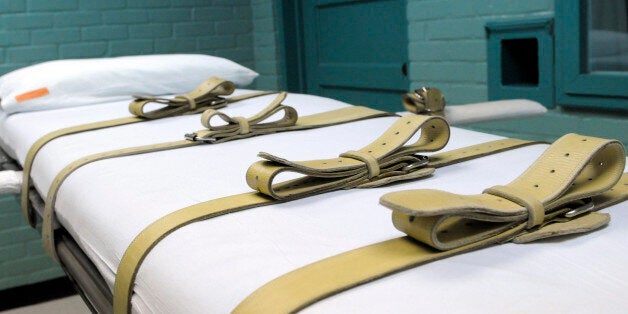
"To survive, you need to occupy your mind", Ricardo, an inmate at the Allan B. Polunsky Unit, Texas's death row, explains to me from behind the thick, soundproof glass that separates us. He is encased in a claustrophobically small booth and his voice reaches me through a phone. To occupy himself, Ricardo writes poems, draws horses, devours books, and listens to current affairs on the radio. He has been on death row for over eight years.
Last week, three states in the US - California, Oklahoma and Nebraska - voted overwhelmingly to either retain, strengthen or restore the death penalty. Even more consequential is the election of Donald Trump, a vocal and enthusiastic supporter of capital punishment who now wields the power to appoint a Supreme Court justice.
The fact that the death penalty is getting a comeback should frighten anyone committed to human rights and justice. Over the summer, on behalf of Amicus ALJ, I worked as a law clerk in a capital defense office in Austin that represents death row inmates in their appeals to the State of Texas. My work in researching and investigating capital cases directly exposed me to the injustices that result from the application of the death penalty, namely, the ways in which race, socio-economics, violation of due process and ineffective legal counsel determine the fates of our clients. Race remains the most reliable predictor of whether a defendant will be executed.
Prolonged isolation devastates the psyche. And yet contact visits are prohibited at the Polunsky Unit. From the moment they are sentenced, inmates are deprived of human touch: they will never again experience a handshake, much less the embrace of a loved one. Other than a few minutes to shower and an hour alone in a larger recreational cage, inmates inhabit a small cement enclosure for 23 hours a day. At least 10 % of the death row population consists of young veterans with PTSD, leaving one to contemplate how much such conditions must exacerbate their trauma. Decades of solitary confinement meant that many of the inmates I spoke to were battling depression, suicidal thoughts and hallucinations.
"Polunsky is full of success stories", an attorney at my office once quipped. She was not being facetious. Indeed, more often than not, those that I met on death row disproved the logic of capital punishment: like all human beings, they manifest a capacity to change. Many had taught themselves to read or write, using those skills to study law and correspond to the outside world. Others had learned sign language in order to communicate across the aisle of the visitation room, to other inmates locked in glass booths. Some had applied themselves to yoga or meditation to stay sane. They were resilient and hopeful. They were 'rehabilitated.' But still, they will be executed.
In the US, the death penalty is more than state policy: it is a way of life. It has taken on a political resonance, shorthand for elected officials to signify a cluster of positions on other issues. "Law and order" candidates are not just "tough on crime," but tough on immigrants and minorities, rooted in tradition and conservative on social issues.
On my way back to Austin, we drive through Huntsville, the notorious site of Texas's execution chambers. Right across the road from the Huntsville Unit, the prison housing Texas's execution chamber, a local restaurant called "Mr Hamburger" proudly advertises its specialty "Killer" and "Old Sparky" burgers. One burger named after Huntsville's most famous sojourners; another named after their historical demise by electrocution on the euphemistically-called "Old Sparky".
The original "Old Sparky", an electric chair that killed 361 prisoners from 1924 and 1964, is housed across town, at the Texas Prison Museum. The museum also includes an exhibit of lethal injection syringes lined up neatly in a row, with cards under each to explain its purpose - from sedation to death. Children under six visit for free, and for a dollar per person, visitors can wear striped shirts and take selfies behind bars.
In some quarters of the US, therefore, the death penalty has been reduced to a tourist attraction - a testament to a culture of disrespect towards human life. Capital punishment is not just state-sanctioned killing, but state-sanctioned dehumanization.
Is there any hope? For now, hope seems to lie in the work of those tireless advocates who in the absurdly mundane visitation room at Polunsky courageously play the roles of social worker, friend and champion in an increasingly unforgiving world. Most of all, hope lies behind the soundproof glass, where human beings, continue to endeavour at living a meaningful life ...
Prisoners' names have been changed.